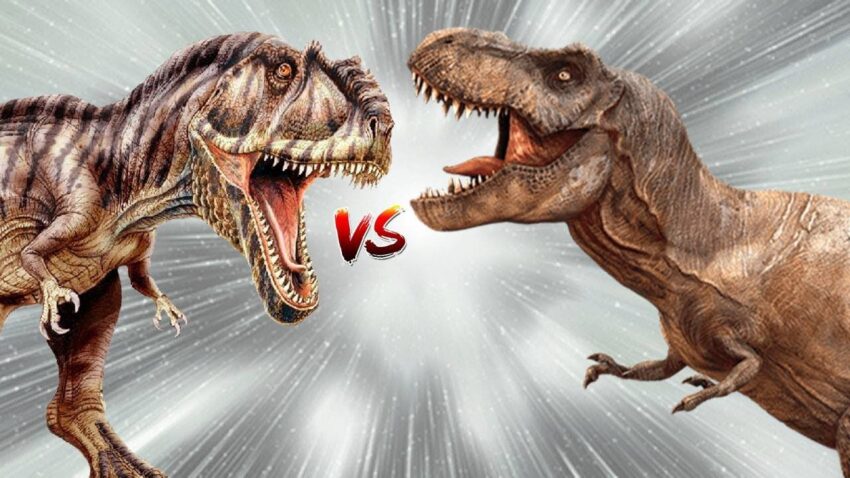Dinosaurs have always captured the imagination of humans, from their towering size to their fearsome features. Among the most iconic predators of the Mesozoic Era are Tyrannosaurus rex (T-Rex) and Allosaurus. These two apex predators roamed different periods of the Jurassic and Cretaceous eras, and while they never encountered each other in reality, it’s fascinating to imagine how these prehistoric giants would compare in a head-to-head battle.
Anatomy and Size
Tyrannosaurus rex, often dubbed the “King of the Dinosaurs,” lived during the late Cretaceous period, about 68–66 million years ago. It was a massive carnivore, measuring up to 40 feet in length, 12–13 feet at the hips, and weighing around 9 tons. With its robust body, powerful hind limbs, and an enormous skull housing bone-crushing teeth, T-Rex was a true force of nature.
On the other hand, Allosaurus, a dominant predator of the late Jurassic period (155–145 million years ago), was slightly smaller. It measured about 28–35 feet in length, stood 8–10 feet tall, and weighed around 2.5 tons. Despite its smaller size, Allosaurus was built for agility and speed, with a leaner frame and a lighter skull compared to T-Rex.
Weaponry
The T-Rex’s primary weapon was its massive skull and teeth. Its teeth could measure up to 12 inches long, with serrated edges capable of puncturing and shattering bones. T-Rex also boasted one of the most powerful bite forces ever recorded in the animal kingdom—estimated at up to 12,800 pounds per square inch (psi).
Allosaurus, in contrast, relied on speed, flexibility, and precision. Its jaws were not as robust as T-Rex’s, but its teeth were sharp and designed for slicing through flesh. Researchers believe Allosaurus used a “hatchet-like” motion to attack, swinging its jaws down to slash at prey.
Speed and Agility
When it comes to speed, Allosaurus had the upper hand. With its lighter build and longer legs, it could potentially reach speeds of 20–30 mph, making it a formidable and agile hunter. T-Rex, being heavier, was slower, with estimated speeds of 10–20 mph, but its powerful legs ensured it could cover ground quickly in short bursts.
Intelligence and Hunting Strategies
Both dinosaurs are believed to have been intelligent predators for their time, though T-Rex is often considered to have had a larger brain relative to its body size, which may have given it an edge in problem-solving and hunting tactics. Allosaurus, however, is thought to have been a pack hunter, potentially coordinating attacks with others to bring down large prey—a trait that could offset its individual disadvantage against a larger predator.
Who Would Win?
A hypothetical battle between T-Rex and Allosaurus would likely favor the T-Rex due to its sheer size, strength, and devastating bite force. Allosaurus, while fast and agile, would struggle to inflict fatal damage on a creature as massive and heavily built as T-Rex.
However, in a pack scenario, multiple Allosaurs working together might overwhelm a lone T-Rex, using their speed and teamwork to wear it down.
Conclusion
While T-Rex and Allosaurus were separated by millions of years and different ecological niches, comparing these two apex predators provides a glimpse into the incredible diversity and adaptability of dinosaurs. Whether you side with the bone-crushing might of T-Rex or the swift, strategic prowess of Allosaurus, one thing is certain: For more information click the linkhttps://dinorepeat.com/

